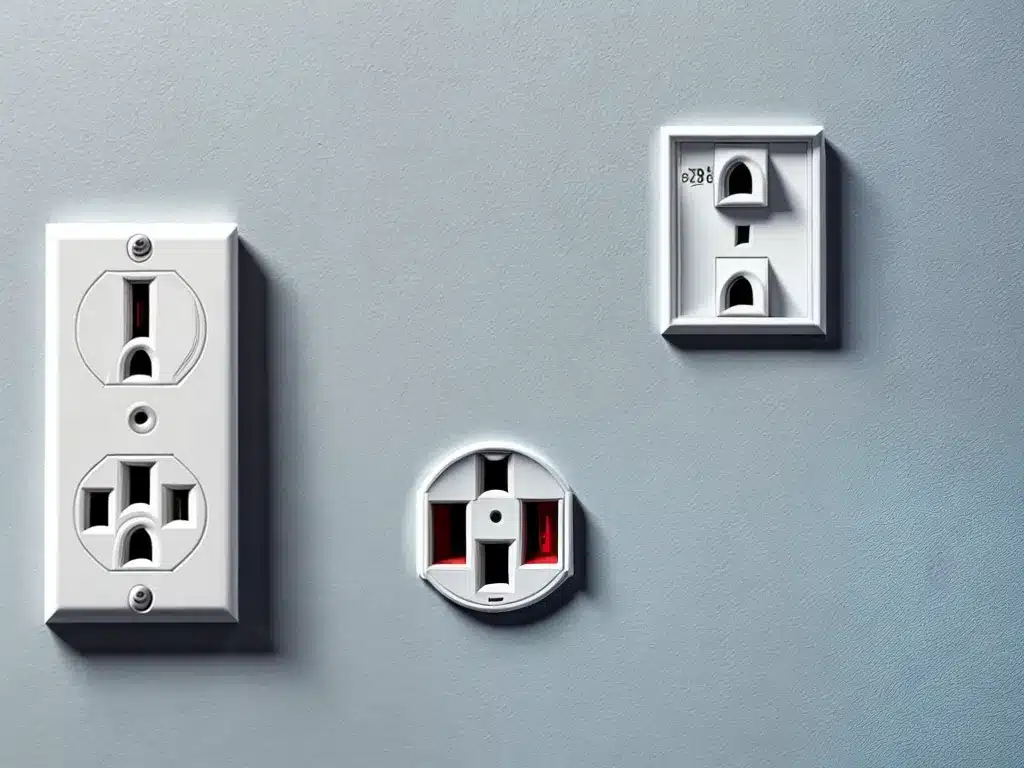 CE Markings Really Improve Electrical Socket Safety?”” />
CE Markings Really Improve Electrical Socket Safety?”” />
Do CE Markings Really Improve Electrical Socket Safety?
As an electrical enthusiast, I often wonder if those CE markings I see on power sockets and plugs really make my electrical appliances safer. In this article, I’ll dig deep into the details of CE markings to find out if they live up to their promise.
What Does the CE Marking Mean?
The CE marking is a certification mark placed on certain products traded within the European Economic Area (EEA). It signifies that the manufacturer has verified the product meets the health, safety, and environmental protection standards required for sale in the EEA.
Some key things to know about CE markings:
-
CE stands for “Conformité Européenne” which means “European Conformity” in French.
-
It is not a quality indicator or a certification of origin like “Made in Germany”.
-
CE marked products can be manufactured anywhere in the world.
-
By affixing the CE mark, the manufacturer declares that the product meets all applicable EU safety, health, and environmental protection requirements.
-
It allows the free movement of products within the EEA.
The Purpose of the CE Marking
The main objectives of the CE marking are:
-
To demonstrate product compliance with EU legislation so they can be traded freely across borders within the EEA.
-
To enhance safety and quality of products.
-
To build trust among consumers that products conform to the highest EU standards.
-
To reduce barriers to trade within EU nations.
So in summary, the CE marking aims to ensure a high level of protection for the health and safety of users while also making trade easier.
How Does the CE Marking Relate to Electrical Products?
The CE marking is mandatory for certain electrical products like household appliances, audio/video equipment, and power tools before they can be sold in the EEA.
For low voltage electrical equipment like power sockets and plugs, the CE marking signifies conformity with the Low Voltage Directive (LVD) 2014/35/EU. This directive ensures electrical products operate safely between 50 to 1000 V AC and 75 to 1500 V DC.
Specifically, the LVD sets safety objectives for electrical equipment regarding:
- Electrical safety (protection against electrical hazards)
- Mechanical safety (stability, absence of sharp edges, etc.)
- Fire safety
- Chemical safety (absence of dangerous chemicals)
- Radiation safety
So the presence of the CE mark on a power socket or plug indicates that the manufacturer has verified its compliance with these essential safety requirements.
CE Certification Process for Electrical Items
-
Self-assessment: Manufacturers must carry out applicable conformity assessments themselves or under their responsibility through accredited bodies. This involves testing and quality assurance.
-
Technical documentation: Manufacturers must prepare technical documentation containing hazard analysis, design details, test reports, etc. proving the product meets LVD safety goals.
-
EU Declaration of Conformity: Manufacturers must draft and sign an EU Declaration of Conformity stating the product meets LVD requirements.
-
Affix CE marking: With the completion of above steps, manufacturers can affix the CE marking on their products. This allows free movement and sale within the EEA.
-
Surveillance: Once CE marked and in the market, products are subject to market surveillance by national authorities for compliance checks.
Does the CE Marking Guarantee Absolute Safety?
While the CE marking process demands rigorous safety testing, it does not guarantee absolute safety or prevent all accidents. Some key limitations:
-
Self-certification means less third-party oversight compared to independent testing.
-
Market surveillance across the EU is not uniform and consistent.
-
The LVD sets minimum baseline safety requirements, not the highest safety standards.
-
Manufacturing quality can vary. Lower quality components may fail prematurely.
-
Product wear and tear over time can degrade safety.
-
Users may misuse products or improperly install them.
So CE can indicate a basic safety level but does not preclude the possibility of safety issues arising. Continued user diligence is necessary.
Examples of Electrical Safety Issues in CE Marked Products
Unfortunately, there have been instances where CE certified electrical products have shown safety flaws:
-
Fire risk: CE marked power strips have overheated and sparked fires due to substandard components.
-
Electric shock: Faulty CE marked electric kettles have given users electric shocks from poorly insulated parts.
-
Injuries: Defective CE marked electronics like hair dryers have resulted in burn injuries from short-circuiting.
-
Non-compliance: Some manufacturers have illegally affixed CE marks without doing proper conformity assessments.
So while infrequent, the CE mark does not make an electrical product 100% safe or defect-proof. Periodic safety checks by users is recommended.
Improving CE Marking Effectiveness
Some ways the CE marking system could be improved to enhance electrical safety are:
-
Introduce periodic third-party testing in addition to self-certification.
-
Increase market surveillance staffing and funds in each EU state.
-
Enact stricter enforcement and penalties for misuse of CE markings.
-
Implement an EU-wide product recall system for dangerous CE marked goods.
-
Create an EU safety watchdog agency to audit high-risk CE products.
-
Increase public awareness of CE marking meaning and limitations.
Conclusion
In conclusion, the CE marking provides a baseline level of electrical safety assurance but is not an absolute guarantee against hazards. While meeting EU Low Voltage Directive requirements is commendable, there is room for improvement in CE regulations and enforcement. As users, we must exercise caution and inspect electrical goods regularly for signs of unsafe damage or malfunction. But overall, the CE mark indicates a product has passed basic EU health and safety standards, offering some degree of consumer protection and confidence.
